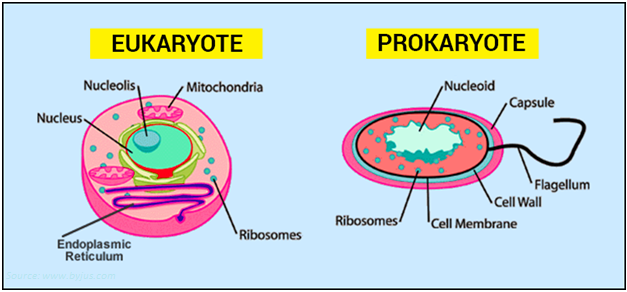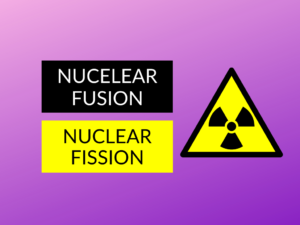Before knowing about the difference of Prokaryotic Cell and Eukaryotic Cell lets discuss briefly about cell first. All organisms in the universe are made up of cells. Cell is the basic unit of life. A cell always differs from other cells in shape, size, volume and weight. The study of structure and composition of cells is known as Cytology. Cell is made up of living substance called Protoplasm. The cell was discovered by the Robert Hooke in 1665.
If an organism is made up of single cell it is called Unicellular Organism and when an organism is made up of many cells it is called Multi cellular organism. Here we’re going to discuss about Prokaryotic cells and Eukaryotic cells.
Prokaryotic Cell:
Prokaryotic cells are represented by bacteria, blue green algae, mycoplasma etc. Prokaryotic cells are far smaller than the Eukaryotic cells. They multiply more rapidly as compared to the most of the Eukaryotic cells. The Prokaryotic cells are nuclear material i.e., DNA, RNA, Proteins etc., is not bound by definite nuclear membrane. Prokaryotic cells vary in shape and size. The cytoplasm lacks well defined organs such as mitochondria, centrioles etc.,
Eukaryotic Cell:
Organism in whose cells material is contained within one or more nuclei and so separated from the cytoplasm by two nuclear membranes known as Eukaryotic cells. They have a Nucleus which contains Nuclear material enclosed by the double layered membrane. All plant and animal cells comes under this category. Components of Eukaryotic cells in cell wall which is absent in some animals cells and some plasma membrane, cytoplasm and organells.


Difference between Prokaryotic cells and Eukaryotic cells:
| Prokaryotic Cell | Eukaryotic Cell |
|---|---|
| Organisations | |
| Has one envelope organization | Has two envelope organization |
| Muramic Acid | |
| Cell wall (if present ) has Muramic acid | They don't have Muramic acid |
| Nucleus | |
| No organized Nucleus | Well organized Nucleus |
| Ribosomes | |
| Ribosomes are of 70 types | Ribosomes are of 80 types |
| Plasmids | |
| Plasmids are present | Plasmids are absent |
| DNA Structure | |
| DNA is circular | DNA is linear |
| DNA Association | |
| DNA is naked | DNA is associated with histone proteins |
| Lysosomes | |
| Lysosomes and microbodies are present | Lysosomes and microbodies are absent |
Conclusion:
Both the Prokaryotic Cell and Eukaryotic Cell may be found in different organisms but they perform several functions and primarily necessary for an organism. When compared in size Prokaryotic cells are far smaller than the Eukaryotic cells. But the performance of both are important in an organism.
If you want to read more about difference between Rods and Cones click here.




